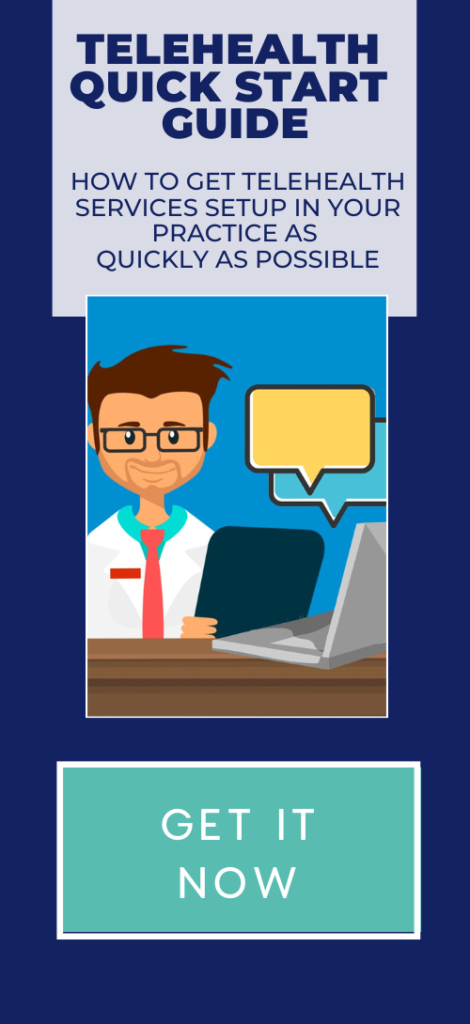 If you treat (or plan to treat) Medicare beneficiaries in a Cash-Based model, this week’s short but crucial podcast episode is for you.
If you treat (or plan to treat) Medicare beneficiaries in a Cash-Based model, this week’s short but crucial podcast episode is for you.
There’s a lot of confusion about about the topic as a whole, and even more confusion when it comes to allowing or not allowing self-claims in the scenarios of:
- “Medicare as a secondary”
- Medicare as primary, but having a private insurance as a secondary”
- and “Medicare Advantage plans”
In this episode, I walk through real-world scenarios and answer the questions I get most often inside the Mastermind about how to safely handle self-claims and cash-pay situations in the above scenarios, as well as when a beneficiary has Medicare Part A only (not Part B).
What You’re Getting Today:
- The key Medicare scenarios every cash-based PT should understand
- When self-claims are allowed (and when they absolutely aren’t)
- A free Medicare and Cash-Pay PT Quick Start Guide to help you avoid costly compliance mistakes
1. When Medicare Is Primary or Secondary: The “No-Go” Scenarios
Let me start here by saying I’m fairly conservative on this topic, and everyone should absolutely make decisions about it with the assistance of an attorney familiar with this niche part of the law.
I also want to say that if a Medicare Beneficiary wants to use their Medicare benefit for ‘normally covered services,’ I don’t think we should be trying to convince them otherwise. Doing so, and then telling them they can’t send in self claims, is outside of what I would consider the “Exception to the Mandatory Claims Submission” rule.
With all that said, if a patient has Medicare Part B (whether it’s their primary or secondary insurance), and they attempt to send in self-claims to Medicare, it could cause your practice big problems.
Even if the patient says, “I’ll just submit this to my secondary insurance only,” that secondary carrier will see that Medicare is the primary and did not already process the claim, then automatically forward the claim to Medicare.
Similarly, if Medicare is secondary and they submit self-claims to their primary, the primary will then send it over to Medicare after processing it … still a problem.
Here’s the simple rule:
- If they have Medicare Part B as a secondary → ❌ No self-claims
- If they have a private insurance as a primary and Medicare as a secondary → ❌ Still no self-claims
2. Medicare Advantage (Part C): When You Might Have Options
Medicare Advantage plans are private, and some may allow self-pay for normally covered services—but others won’t.
Here’s what to do:
- Call the plan directly. Ask if they allow normally covered PT services on a self-pay basis, and will process self-claims sent in by the patient.
- Document everything. If you’re cleared to treat and provide superbills, you’ll have written confirmation. If not, you’ve protected yourself.
Many advantage plans will still say no, but you’ll find some that allow it. Either way, you look professional and thorough—and that builds trust with patients.
3. What If They Only Have Medicare Part A?
If a patient only has Part A (hospital/inpatient coverage) and not Part B, then you can treat them on a self-pay basis for outpatient care.
Why?
Because Part A doesn’t cover outpatient PT at all.
Just make sure to verify this carefully. Many patients believe they have only Part A but are actually enrolled in Part B as well. Ask for a photo of their Medicare card to confirm before you proceed.
Your Free Resource: The Medicare and Cash-Pay PT Quick Start Guide
To help you navigate these gray areas confidently, I’ve put together a free Quick Start Guide—the first 20 pages of my full-length eBook Medicare and Cash-Pay Physical Therapy:
Inside, you’ll get:
- Clear summaries of key Medicare rules for cash-based care
- Perspectives from legal and compliance experts
- A framework for discussing these policies with your own attorney
Invest in your team, invest in your practice–download your free guide now!
Thanks so much for checking out this week’s Podcast… hope you enjoy the free resource!
The Final Word
Medicare rules are complex—and full of gray zones—but they’re navigable if you know where to draw the lines.
If you can clearly explain what’s allowed, what’s not, and why, you’ll keep your practice compliant while still providing incredible care to the patients who need you most.
Operate with clarity, confidence, and compliance.
— Jarod
WANT STEP-BY-STEP GUIDANCE TO START, GROW, OR TRANSITION YOUR OWN CASH-BASED PRACTICE?
>> Click Here to learn how to start, grow, or transition your own Cash-Based Practice <<
HERE ARE SOME MORE EPISODES ON MEDICARE & COMPLIANCE:
 CBP 039: Medicare & Cash-Pay Physical Therapy
CBP 039: Medicare & Cash-Pay Physical Therapy
I read and walk through the first 22 pages of my Medicare & Cash-Pay PT guide—covering the relationships a PT can have with Medicare, when self-pay is allowed, and the “mandatory claims submission” rule.
 How the Rules Change for Cash-Pay Patients with Medicare ADVANTAGE (Part C) Plans
How the Rules Change for Cash-Pay Patients with Medicare ADVANTAGE (Part C) Plans
In this post, I discuss how Medicare Advantage (Part C) plans complicate cash-pay treatment and when you may or may not be able to accept self-pay for services normally covered by Medicare.
Can I Accept an Out-of-Pocket Payment from a Medicare Patient?
This article dives into the rules about when a Medicare beneficiary can pay you directly, how “covered vs non-covered” services factor in, and what documentation you need to stay compliant.
MORE RESOURCES TO HELP YOU TURN FOLLOWERS INTO PAYING PATIENTS:
Cash-Based Practice Freedom e-Course 2.0
This course gives you every step, script, process, and resource I’ve used (and coached 1000+ practice owners through) to build highly profitable, insurance-free practices. It’s all laid out for you in a perfect step-by-step blueprint …Check out the Course here.
How to Answer “Do You Take My Insurance?”
This powerful system helps you master the initial patient phone call so you can help prospects make the best decisions about their healthcare, and maximize conversions of phone calls into cash-pay patients … even if the very first thing out of their mouth is, “Do you take Blue Cross?”. Check out the Masterclass here.
Cash-Based Practice Mastermind
If you want to double your profit per patient and build the practice of your dreams—without relying on greedy insurance companies—this Mastermind coaching program gets you there with: weekly live coaching, a supportive community, and a vault of done-for-you resources and masterclasses to accelerate your growth and avoid costly mistakes. Check out the Mastermind here.










